Ahhhh, the pool. The perfect place to spend a steamy summer day. Whether you're enjoying a relaxing solo float or just thankful that it's keeping the kids busy for more than five minutes, the pool is the perfect place to enjoy some summer vibes. At least it is until you get out and look at your hair. Chlorine damage is no joke, especially if you put a lot of time, effort, and money into your hair. Those dry, brittle strands may seem like the end of the line for your 'do, but are they really? Fear not! There are ways to come back from even the most intense chlorine damage. Whether you treat it after the fact or take steps to prevent it beforehand, you can (and should) keep pool-hair at bay. You're going to want to keep this guide to treating chlorine damaged hair handy.

Why Bother With Chlorine Anyway?
Wouldn't it be nice if the local pool didn't use chlorine at all? So much gentler on your hair!
Except the trade-off is generally much worse. An untreated pool is, unfortunately, a breeding ground for germs. Plunge into an untreated pool and you're opening yourself up to E. coli, salmonella, and norovirus. Add in a dash of swimmer's ear and your quick dip will haunt you for days to come.

That's where chlorine comes in. A well-balanced pool includes just enough chlorine to kill off any unwanted microorganisms. While chlorine can have negative effects for skin and hair, the trade-off is worth it if it keeps you from being overwhelmed by harmful bacteria.
Chlorine: Fact or Fiction
How well do you know your chlorine? Let's bust a few myths.
Chlorine turns your hair green: False! Chlorine can cause issues, but green hair is not one of them. If you notice your hair looking a little green after a swim, it's because of oxidized metals in the water. They bind to your hair shaft and give it a different hue.
Chlorine only affects your hair: False! Chlorine is perfectly safe to swim in, but unfortunately it can affect more than just your hair. Certain skin types may notice irritation after swimming in a chlorinated pool. Slathering on the SPF beforehand can help with this (and is generally a good idea no matter what your skin type).
Swimming in the ocean is better for your hair and skin: False! While there are pros and cons of any swimming choice, salt water just trades one problem for another. Salt dries out your hair and scalp, leaving you more likely to experience breakage and dandruff.
So What Does Chlorine Actually Do to My Hair?
Believe it or not, your hair is mostly protein. Specifically a protein called keratin. Every strand of hair is infused with an oil known as sebum. Your body naturally produces sebum, and it helps your hair retain moisture. It's an incredibly important component of healthy hair. If it's allowed to do its thing, your hair looks sleek, moisturized, and strong. If something interferes, though, trouble is just around the corner.
And unfortunately, chlorine loves to interfere with sebum. When the two substances interact, the chlorine bonds with the sebum and pulls it out of your hair. Your hair ends up looking dull, dry, and weak. Continued exposure leads to breakage and split ends.

But wait, there's more! Chlorine can also interact with the keratin in your hair. When it does, it physically weakens the protein, causing your hair to become thinner.
Finally, chlorine reacts to melanin, the compound that gives your hair its color. Melanin can bond to chlorine, leaving behind just the keratin. You end up with hair that's a dull yellow color. The effect is even more pronounced if your hair is dyed. Not everyone will experience every chlorine-related issue with every swim. However, the more time you spend in a pool, the more the effects will build up.
Who is At Risk for Chlorine Damage?
Certain hair types are more vulnerable to chlorine damage than others. If your hair falls under any of these categories, pay extra attention to this guide on treating chlorine damaged hair:
- Dry Hair - If your hair is already dry, chlorine will dry it out further.
- Thin or Fine Hair - Chlorine can make hair that is thin or fine even finer.
- Previously Damaged Hair - If your hair is in bad shape when you jump in the pool, it'll be even worse when you get out.
- Color Treated Hair - This is especially true if your hair has been lightened or highlighted.
- Chemically Treated Hair - If you've had your hair permed or relaxed, you're at even greater risk of chlorine damage.

Preventing Chlorine Damage
Going on a swim? Take steps to prevent chlorine damage from occurring. Your hair will thank you!
Rinse Your Hair Before Entering the Pool
Your hair can only absorb so much water. It's kind of like a sponge. Fill it up with tap water and there will be much less room for chlorinated water to get in.
Pre-Condition
When you're rinsing your hair, work in a leave-in conditioner or a conditioning spray. It'll help seal all that fresh water into your hair, plus it'll help keep chlorine out. You can use a standard conditioner if you want, but consider using aloe vera instead. It's extremely hydrating for hair, plus it's chock full of vitamins and essential acids. Work it into your hair as is, or mix it with honey and coconut oil for an extra-hydrating treat.
Use a Swim Cap
Cover your hair with a swimming cap to reduce contact with chlorine. A cap will also help keep all that fresh water and conditioner in your hair. Sure, it may look a little goofy, but you'll be the one laughing when you step out of the pool with perfectly happy, healthy hair.
Rinse Right Away
Hop right into the shower when you're done swimming. I'd say run, don't walk, but you'd probably get in trouble with the lifeguard. Getting under fresh water as soon as possible lets you remove chlorine from your hair before it has time to really cause damage. If you really want to take it to the next level, use fresh water to rinse your hair periodically as you swim.
Lather Up
Shampoo your hair thoroughly immediately after you swim. It'll cleanse away the chlorine and thus stop it from further damaging your hair. If you swim regularly, consider investing in a shampoo especially made for removing chlorine.
Hydrate
Hydrate your hair by applying a conditioner once you leave the pool. It'll replace the moisture that the chlorine takes from your hair, helping reduce the risk of damage. While you're at it, hydrate yourself too! Swimming takes more out of you than you might think, and a well-hydrated body is crucial to great health and great hair.
Take Care of Your Hair
Hair that's already strong will come out better against chlorine than weak hair. Take great care of your hair outside of the pool. Eat a healthy diet with plenty of protein. Trim your hair regularly to avoid split ends. Use high quality natural products to reduce damage from hazardous ingredients. Give your hair the love it needs and it'll thank you by staying in great health.
Fixing Chlorine Damaged Hair
Prevention is nice and all, but let's face it: damage happens. But don't panic. You can come back from even the most intense poolside blues. In this section of our guide to treating chlorine damaged hair, we'll be giving you some easy fixes.
Condition Condition Condition
Like I mentioned earlier, one of the sneakiest things chlorine does is strip all the sebum out of your hair. It'll leave your strands feeling dry and easy to break. The solution is to add some moisture right back in.
Aloe vera is an excellent tool for moisturizing damaged hair. Work it in from scalp to tips, then let it hang out for a half hour or so. Rinse thoroughly when you're done.
Argan oil is another must-have for treating chlorine damage. Like aloe, it helps work more moisture into your hair. It's also rich in vitamins and antioxidants, including Vitamin E. This will help make your hair more elastic and less prone to breakage - a very good thing when you're dealing with chlorine damage.
Clarify
Chlorine doesn't just cause damage while you're in the pool. It can build up in your hair and hang out. When this happens, your hair will feel worse than it actually is. Use a clarifying shampoo or treatment to clear out any remaining chlorine. You can use a commercially available shampoo, or make your own treatment. A simple apple cider vinegar rinse can work wonders for getting rid of stubborn chlorine.
Be Gentle
Dry, brittle hair is easy to damage while combing and styling. This is a time to be extremely gentle. Avoid using harsh heat or damaging products. Use a wide tooth comb to work out tangles. Be mindful when putting your hair up and avoid tight elastics that cause tension and breakage.
Take Care of Your Scalp
Healthy hair starts with a healthy scalp. Chlorine can damage the skin underneath your hair just as much as it hurts your hair itself. A severely dry scalp can damage your hair follicles. This reduces the nourishment and oils your hair receives, causing further damage.
Rub a little extra argan oil or aloe vera on your scalp when you condition your hair. It'll help rehydrate the skin and make sure your hair gets the nutrition it needs.
Consider Using a Protein Treatment
Chlorine can break down the proteins in your hair. A protein treatment builds those building blocks back up. Choose a natural treatment free of parabens and phthalates to nourish your hair without exposure to harmful ingredients.
Talk to Your Stylist
If your hair is extremely damaged, it may be time to call in the experts. Severely damaged hair may not be repairable with at-home treatments. Your stylist can recommend products to help fix your specific issues. If your hair is too far gone, your stylist can give you a cut to offset the damage.
Be Patient
Chlorine damage can happen quickly, but it can take a while for your hair to bounce back. Give it time to heal before declaring it a lost cause. And don't let damage deter you from getting back in the pool. Take preventative measures to protect against further damage while giving your hair time to get back to its former glory.
Bonus Tip: Fake it 'til You Make It
When it's not getting harassed by chlorine, summer hair can be a lot of fun. Especially when it comes to those soft, beachy waves you get from a day by the water. But if you're waiting for chlorine-damaged hair to heal after giving our guide to treating chlorine damaged hair a go, the last thing you want to do is dunk yourself in the ocean.
Now's the perfect time to try a sea salt spray. These sprays give you amazing natural waves while enriching your hair with amazing ingredients. It's the perfect solution until your hair heals, or even afterwards.
Start out with damp hair (like right after using a clarifying shampoo). You don't want it sopping wet - give it 20 minutes or so to dry. Comb out your hair, then chunk it up into sections. Give your salt spray bottle a good shake, and spray lightly from your roots to your tips. Use your fingers and hands to twist, scrunch, crunch, and play with your hair. Keep styling until you end up with the waves you want. Let your hair air or use a hair dryer (no towels!) and voila! Beachy hair without the damage.

Chlorine pools may not be kind to your hair, but that shouldn't stop you from enjoying them. Now that you've read this guide to treating chlorine damaged hair, you can be more mindful and approach your next swim with confidence.
What's your worst pool-hair experience? Have you ever had the dreaded green hair? What did you do to get your healthy hair back? Let me know about it in the comments below!



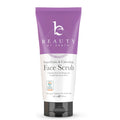
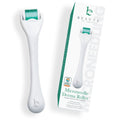

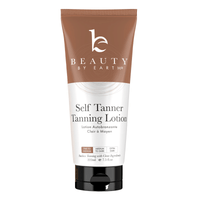
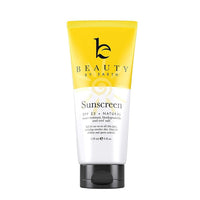
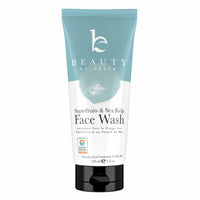

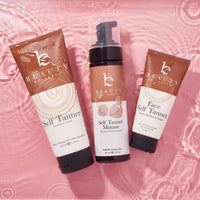
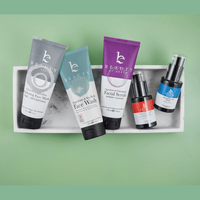


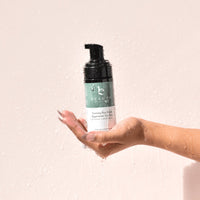
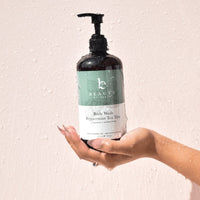
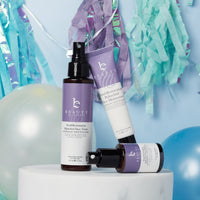
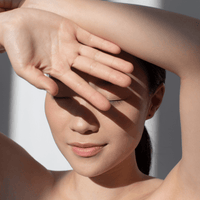

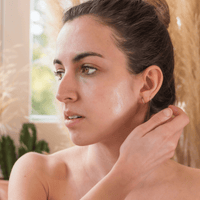

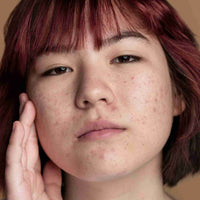
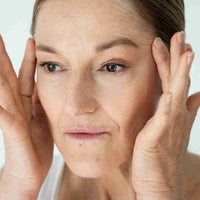








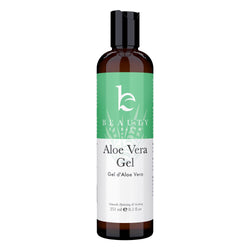
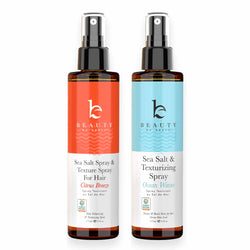





join the conversation
Those who are extremely prone to migraines and have large heads cannot wear swim caps, unless you know of one where the “band” is larger. There are swim caps where the body of the cap is larger, but none I have found where the band is larger. Would love to know if so.